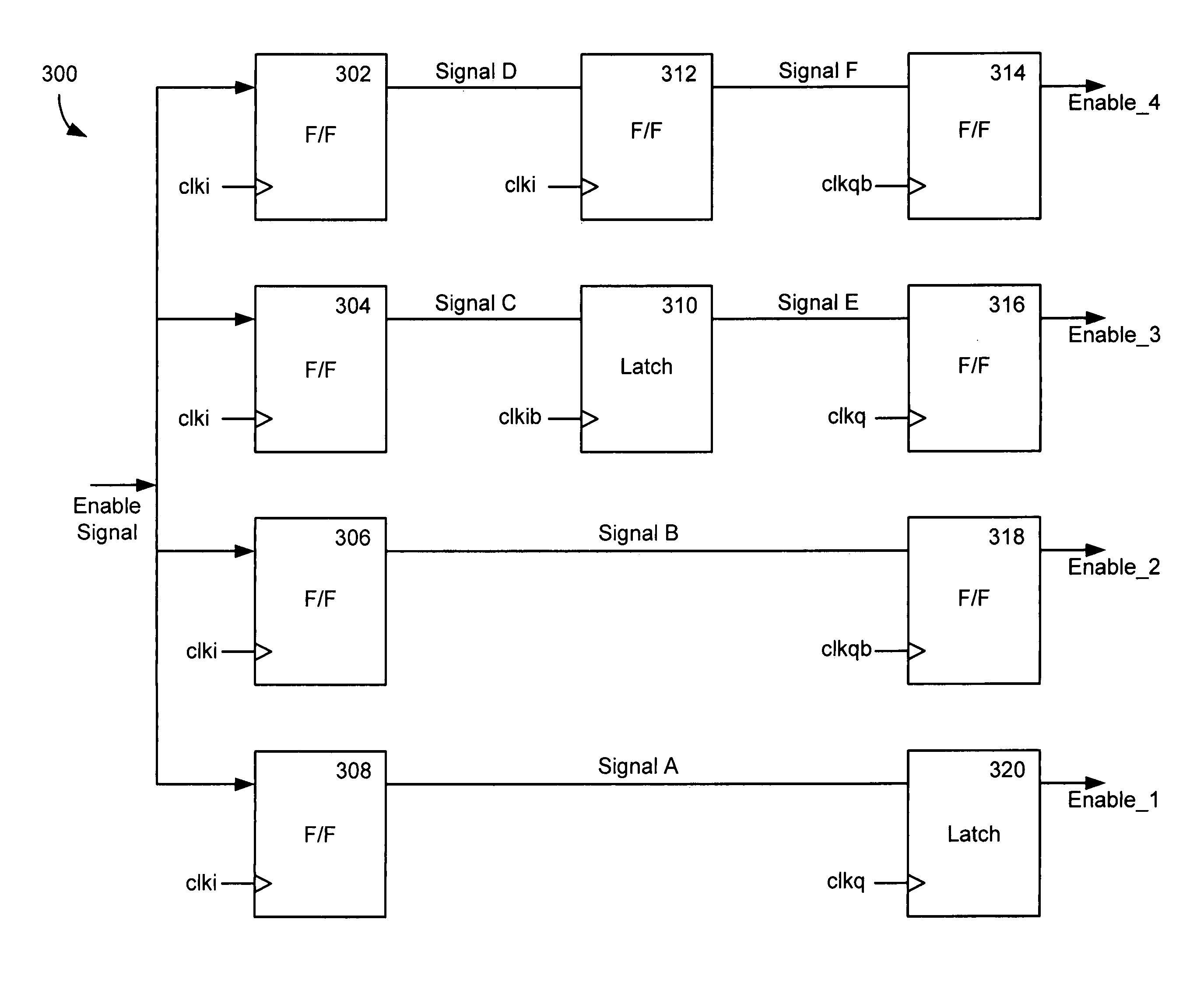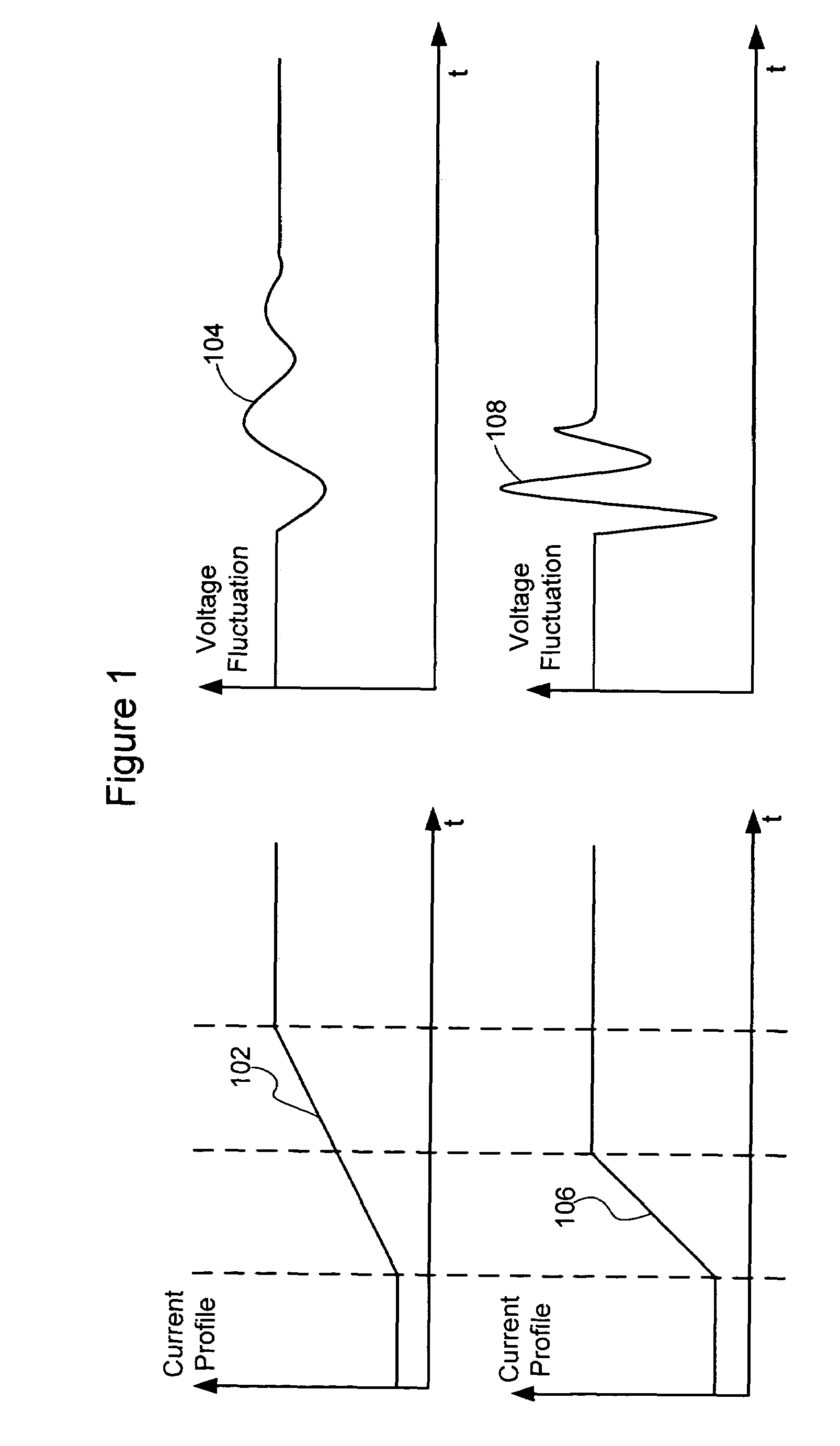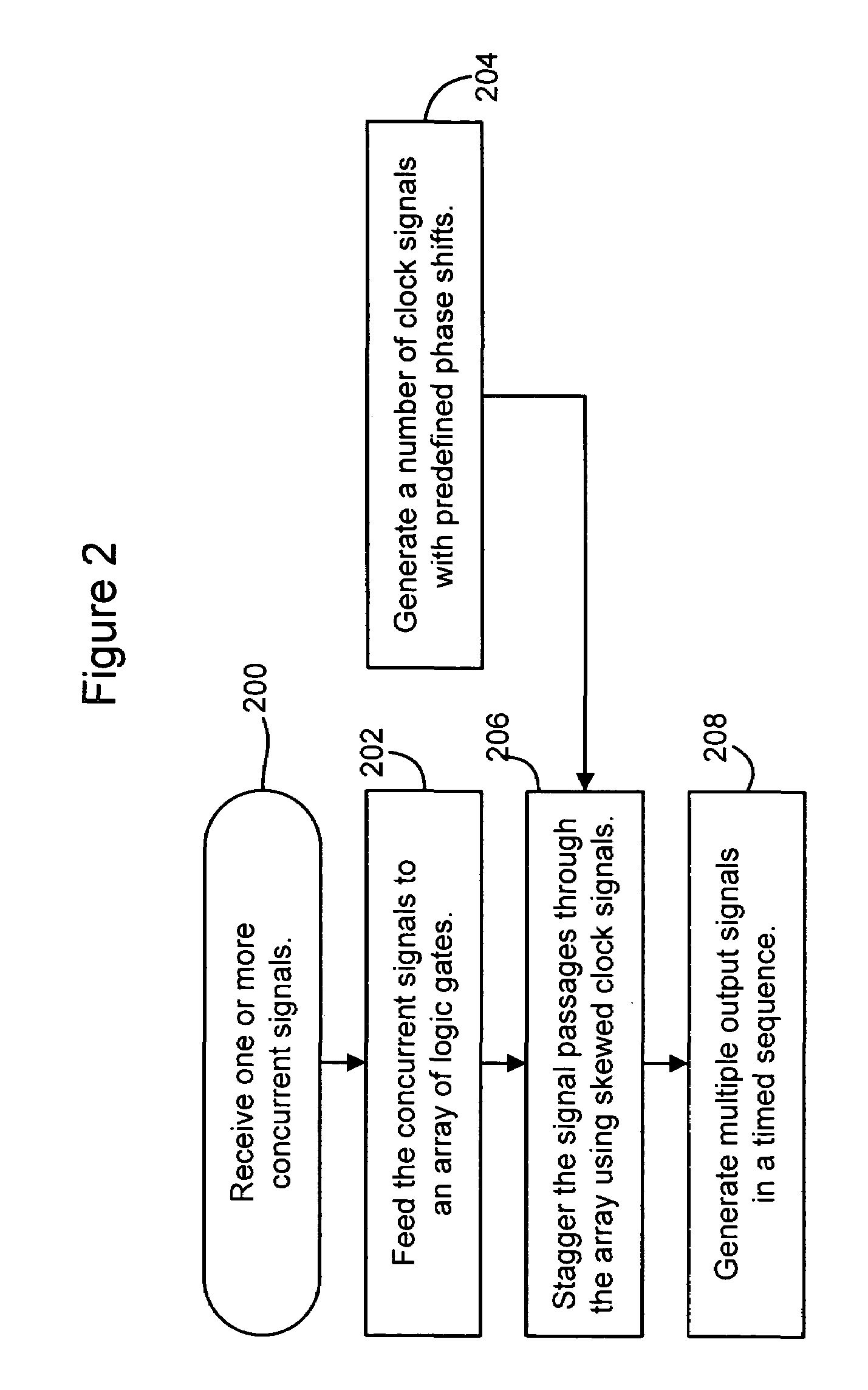Technique for operating a delay circuit
a delay circuit and delay technology, applied in the field of electronic circuits, can solve the problems of parasitic troublesome electronic circuits, inductors induced voltage fluctuations, etc., and achieve the effect of reducing inductive noise and inductive nois
- Summary
- Abstract
- Description
- Claims
- Application Information
AI Technical Summary
Benefits of technology
Problems solved by technology
Method used
Image
Examples
Embodiment Construction
)
[0025]Referring to FIG. 2, there is shown a flow chart illustrating an exemplary method for operating a delay circuit in accordance with an embodiment of the present disclosure.
[0026]In step 200, one or more substantially concurrent signals may be received. The one or more concurrent signals may be digital control signals associated with a memory array. For example, an ENABLE signal may be provided for transmission to a number of transmit systems that are part of a DRAM's I / O subsystem. Without any control, the ENABLE signal would be sent to the transmit systems simultaneously, causing a rapid current ramp on the power rail. To avoid such a rapid change in current, it may be desirable to control the delivery of the ENABLE signal in a non-simultaneous manner.
[0027]In step 202, the one or more substantially concurrent signals may be fed to an array of logic gates. The array of logic gates may include flip-flops and latches arranged in such a topology that they provide a number of dat...
PUM
 Login to View More
Login to View More Abstract
Description
Claims
Application Information
 Login to View More
Login to View More - R&D
- Intellectual Property
- Life Sciences
- Materials
- Tech Scout
- Unparalleled Data Quality
- Higher Quality Content
- 60% Fewer Hallucinations
Browse by: Latest US Patents, China's latest patents, Technical Efficacy Thesaurus, Application Domain, Technology Topic, Popular Technical Reports.
© 2025 PatSnap. All rights reserved.Legal|Privacy policy|Modern Slavery Act Transparency Statement|Sitemap|About US| Contact US: help@patsnap.com



